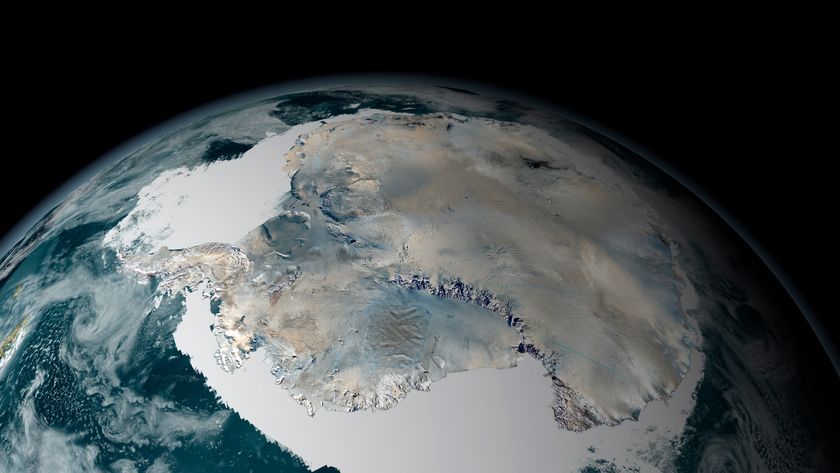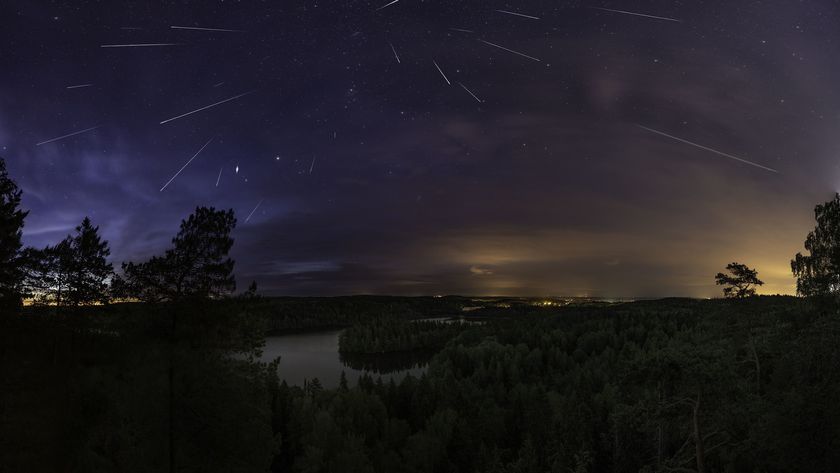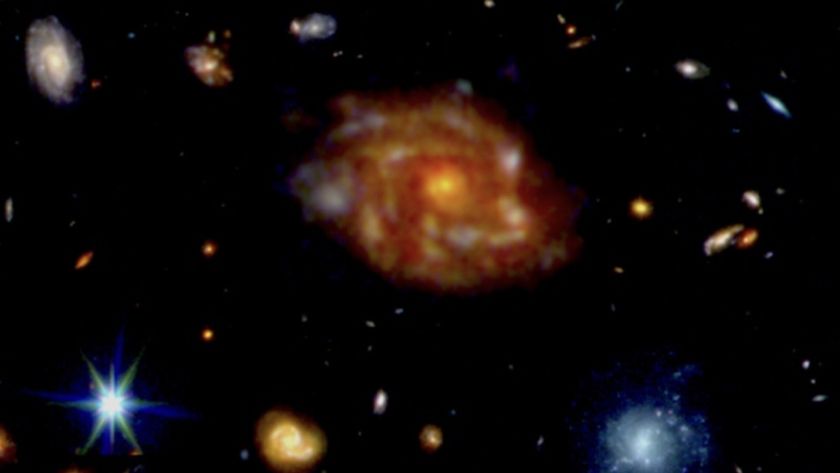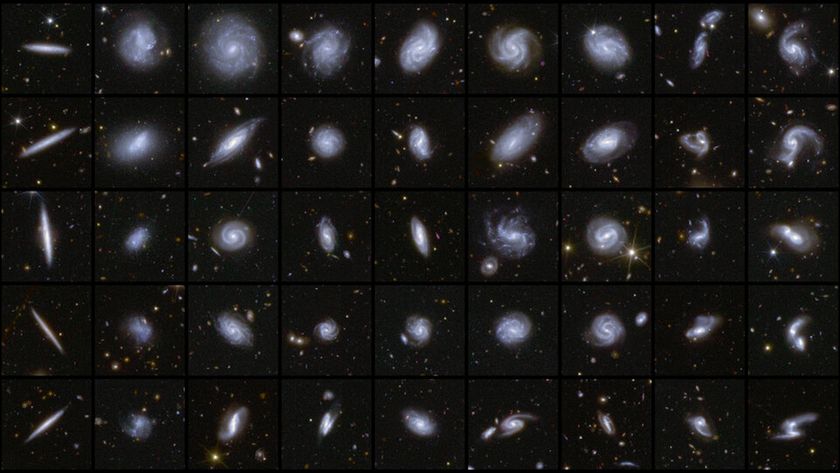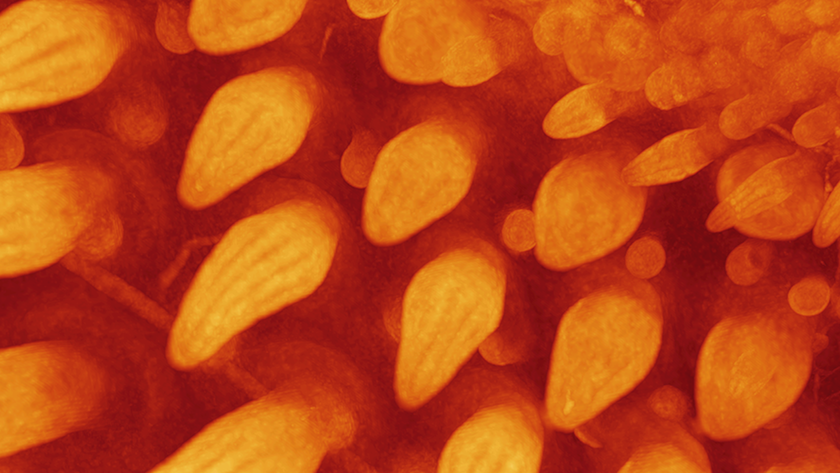
Ancient Asteroid Destroyer Finally Found, And It's a New Kind of Meteorite

For 50 years, scientists have wondered what annihilated the ancestor of L-chondrites, the roof-smashing, head-bonking meteorites that frequently pummel Earth.
Now, a new kind of meteorite discovered in a southern Sweden limestone quarry may finally solve the mystery, scientists report. The strange new rock may be the missing "other half" from one of the biggest interstellar collisions in a billion years.
"Something we didn't really know about before was flying around and crashed into the L-chondrites," said study co-author Gary Huss of the University of Hawaii at Manoa.
The space rock is a 470-million-year-old fossil meteorite first spotted three years ago by workers at Sweden's Thorsberg quarry, where stonecutters have an expert eye for extraterrestrial objects. Quarriers have plucked 101 fossil meteorites from the pit's ancient pink limestone in the last two decades. [Photos: New Kind of Meteorite Found in Sweden]
Researchers have nicknamed the new meteorite the "mysterious object" until its formal name is approved, said lead study author Birger Schmitz, of Lund University in Sweden and Chicago's Field Museum. It will likely be named for a nearby church, the Österplana, he said.
Mysterious find
Geochemically, the meteorite falls into a class called the primitive achondrites, and most resembles a rare group of achondrites called the winonaites. But small differences in certain elements in its chromite grains set the mysterious object apart from the winonaites, and its texture and exposure age distinguish the new meteorite from the other 49,000 or so meteorites found so far on Earth.
Sign up for the Live Science daily newsletter now
Get the world’s most fascinating discoveries delivered straight to your inbox.
"It's a very, very strange and unusual find," Schmitz told Live Science's Our Amazing Planet.
The new meteorite was recently reported online in the journal Earth and Planetary Science Letters, and the study will appear in the journal's Aug. 15 print edition.
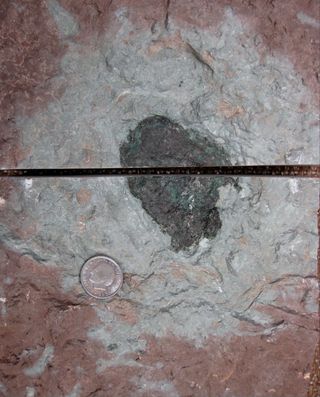
Until now, all of the quarry's fossil meteorites were L-chondrites. Schmitz, who has led the chondrite cataloging, admitted the rock hunt had become "quite boring."
But the rare find has not only revitalized interest in the quarry, it has also brought together the world's top meteorite experts for a global hunt through geologic time. Thanks to Schmitz's careful detective work on meteorites, scientists now know that each kind of meteorite leaves behind a unique calling card: tough minerals called spinels. Even if meteorites weather away, their spinels linger for hundreds of million of years in Earth rocks. Schmitz and his cohorts think they can pin down how many meteorites rained down on Earth in the past 2.5 billion years, as well as what kind fell, by extracting extraterrestrial spinels from sedimentary rocks. Their work may confirm suspicions that recent meteorite falls represent a mere fraction of the rocks drifting in space.
"I think our new finding adds to the understanding that the meteorites that come down on Earth today may not be entirely representative of what is out there," Schmitz said. "One thing our study shows is that we maybe don't know as much as we think we know about the solar system."
Ancient wreckage
The limestone quarry preserves the remnants of a cosmic cataclysm that took place 470 million years ago, during the Ordovician Period. Scientists think there was an enormous crash between two large bodies out in the asteroid belt. The crash blew apart two asteroids, or an asteroid and comet, slinging dust and debris toward Earth. One of the impactors was the source of all L-chondrite meteorites. But no one has ever found a piece of the rock that hit the L-chondrite parent, until now.
The Swedish meteorite's exposure age — the length of time it sailed through space — is the key to placing the fossil space rock at the scene of the crash. The meteorite zipped from the asteroid belt to Earth in just 1 million years. That's the same remarkably young exposure age as the L-chondrites recovered from the Thorsberg quarry, suggesting the rocks sprayed Earth in the same wave of space debris. [Infographic: Asteroid Belt Explained]
Meteorite expert Tim Swindle, who was not involved in the study, praised the team's careful analysis and said it was unlikely that any other meteorite but an Ordovician fragment would have such a short exposure age. "Very, very few modern meteorites have exposure ages that low," said Swindle, a professor at the University of Arizona in Tucson. "Typically, it takes things longer to get here from the asteroid belt," he said. "It's a telling argument."
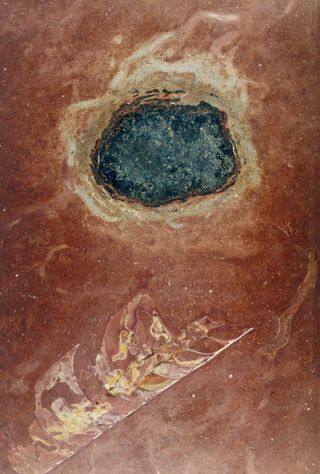
But because so little is left of the original meteorite — almost all its minerals have been altered to clay — Swindle thinks there's wiggle room for linking it to known classes of meteorite, instead of calling it a new find.
"I think it's entirely plausible [that it's a new kind of meteorite], and it's a great study, but that's not a guarantee they've got it right," Swindle said. "But if they didn't, it's because of new things we'll find out in future work, not because of their analysis."
The geochemical tests were performed on sand-sized chromite spinels, which confirmed the rock's extraterrestrial origin. The altered clay is also about 100,000 times richer in iridium than terrestrial rocks. Iridium is the element that marks the meteorite impact horizon when the dinosaurs went extinct.
Hunt for space history
Schmitz now plans to search for these strange achondrite spinels in the quarry sediments, as well as in other rocks of the same age around the world. Ordovician meteorite spinels from L-chondrites have been found in China, Russia and Sweden, and small micrometeorites have been discovered in Scotland and South America. Researchers think about 100 times as many meteorites fell on Earth during the Ordovician compared with today, but only about a dozen impact craters of the proper age have been identified. [Crash! 10 Biggest Impact Craters on Earth]
A bigger quest is also in the works. Schmitz and his colleagues plan to dissolve tons of rock in acid in a global search for meteoritic spinel grains. This detective work will help researchers pin down the history of the asteroid belt and solar system. Spinels can provide an estimate of how many meteorites fell in the past, and what kind hit Earth. These tiny pieces of vanished meteorites may fill in missing history, because meteorite impact craters often vanish due to geologic forces.
"This can give you a ground truth for models for how the solar system may have evolved over time," said Gary Huss, a co-author on the Swedish meteorite study who will collaborate on the spinel search. "I think a lot of people have worried for some time that we don't really know what's going on in the asteroid belt."
Email Becky Oskin or follow her @beckyoskin. Follow us @OAPlanet, Facebook and Google+. Original article at Live Science's Our Amazing Planet.

